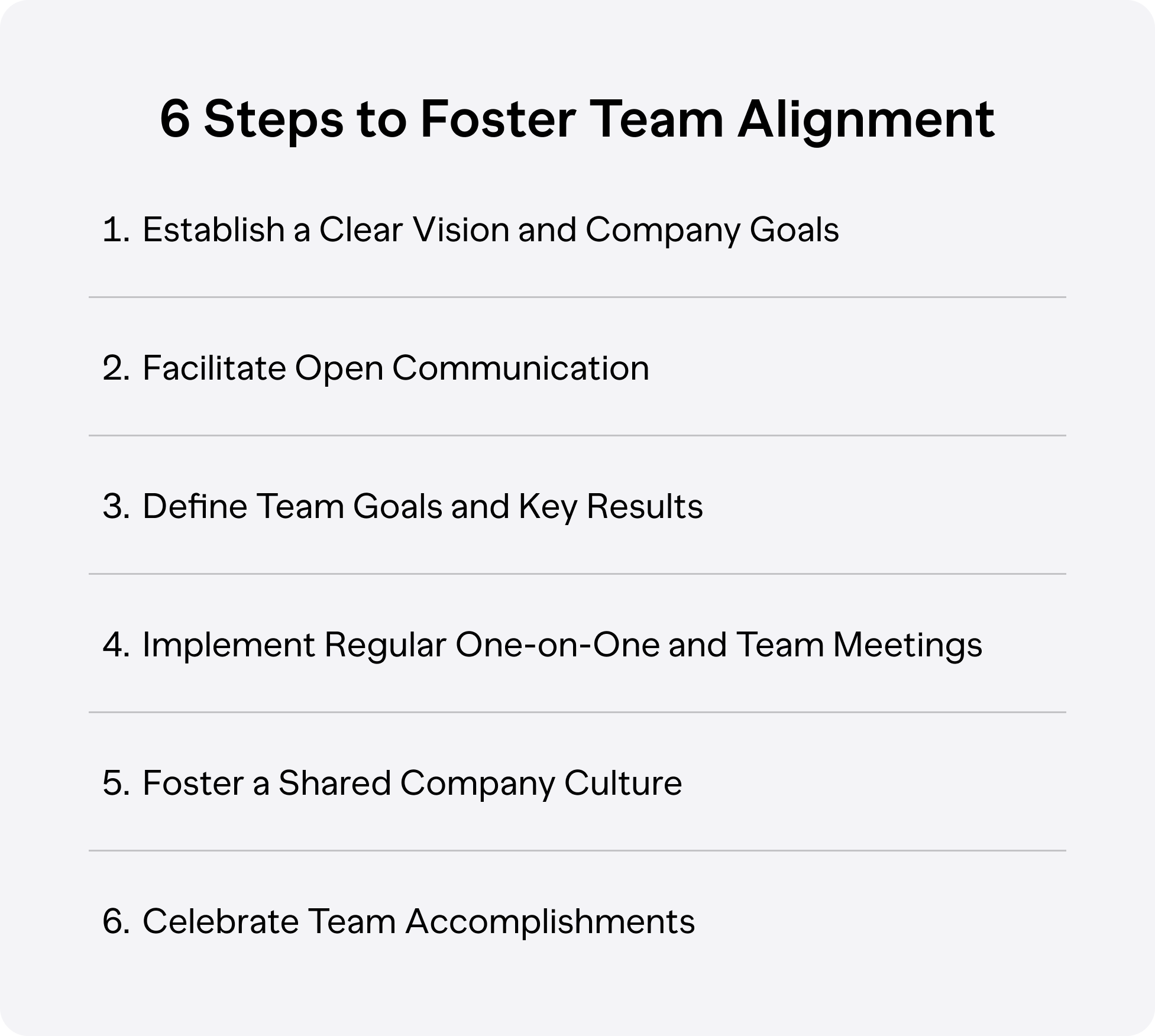What is Team Alignment?
When a team is in alignment, all members of an organization share a common understanding and commitment to its goals. This unity is not about conformity but about ensuring that each team member's actions and decisions are consistently aligned with the broader objectives of the company.
At its core, team alignment means that everyone — from entry-level employees to top management — has clarity on the company's strategy, understands their individual roles within that strategy, and is motivated to work together to achieve it. It’s about creating a workplace where the efforts of individual team members are harmonized with the team goals, fostering an environment where collaborative success is as celebrated as individual achievements.
True alignment goes beyond the surface level of having everyone 'on the same page.' It delves into aligning the more profound aspects of work — such as values, company vision, and long-term objectives. It acknowledges the diversity of skills and backgrounds within the team and leverages these to push the entire organization in the same direction.
Steven Chen On Creating Alignment Through Transparency
5 Benefits of Team Alignment
When each member of a team understands not only their individual goals but how those goals contribute to the company’s objectives, you have a team that’s in alignment. Benefits of team alignment include:
- Increased Productivity: Aligned teams work with a clear focus and enjoy increased productivity. When there is a shared understanding of the end goal, efforts are streamlined, and less time is spent on tasks that don’t serve the company's strategy.
- Enhanced Employee Satisfaction: Seeing the impact of their work will boost your team’s morale and job satisfaction. Everyone wants to feel like they are part of a bigger picture.
- Improved Decision Making: With team alignment, decisions are easier to make. Teams can make quicker, more informed choices when they have shared priorities.
- Seamless Collaboration: Cross-functional teams often have competing priorities or different understandings of a project. This is when friction arises — unless a team is in alignment. When everyone understands the overall company goals, it’s easier to work together.
- Long-Term Success: When everyone’s moving in the same direction, your company is better positioned to adapt to changes. Overcoming challenges is much simpler when you’re backed by a team that’s in alignment.
Signs of Team Misalignment
If left unchecked, signs that your team is misaligned can quickly lead to inefficiency and discord. Here are some indicators that your team isn’t fully aligned:
- Communication Breakdown: Watch for guarded or unclear communication. It will prevent a shared understanding of overall company objectives.
- Decreased Employee Engagement: If team members are becoming disinterested and less proactive, it’s time to look into ways to improve employee engagement.
- Conflicting Decision Making: Decision making is much more difficult on a misaligned team, and it leads to confusion and conflict.
- Observable Frustration among Team Members: When a team member feels their work isn’t contributing to the company's success, frustration and dissatisfaction can quickly surface.
- Lack of Shared Success: Does your team celebrate shared successes and recognize team accomplishments? If not, your team might not feel united in a common purpose.

6 Ways to Foster Team Alignment
Creating team alignment involves clear communication, shared goals, and strategic planning. Here are seven ways to build team alignment:
- Establish a Clear Vision and Company Goals: Make sure every team member understands the company's long-term goals and — more importantly — how their individual roles contribute to achieving them.
- Facilitate Open Communication: Every team member should feel comfortable sharing ideas and feedback. It’s the only way to create a collaborative environment for problem-solving and innovation.
- Define Team Goals and Key Results: Your team members should know what they are working towards and why it matters. If you haven’t already, let them in on the overall company goals.
- Implement Regular One-on-One and Team Meetings: One-on-ones are the best place for team members to share pain points, and decision-making. Larger team meetings are good for this too. You can address issues in real-time, helping maintain team alignment.
- Foster a Shared Company Culture: It’s up to you to cultivate an environment where company values and culture are lived daily. It helps reinforce the sense that the team as a whole is working towards the same company vision.
- Celebrate Team Accomplishments: Large or small, team accomplishments are important, and recognizing them is a great way to build a sense of shared success.